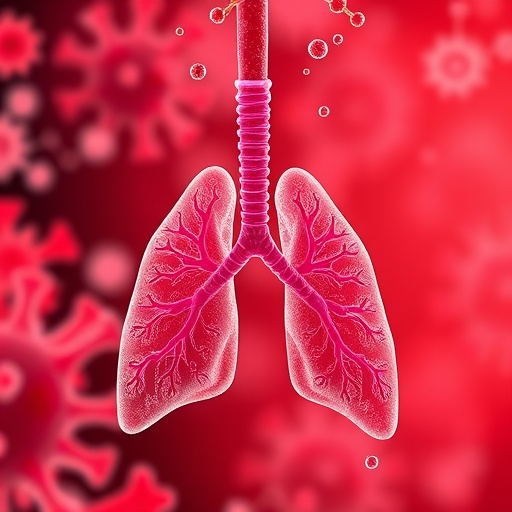Gaining too little or too much weight in pregnancy affects birth outcomes – News-Medical

Report on Gestational Weight Gain and its Implications for Sustainable Development Goals
1.0 Executive Summary
A systematic review and meta-analysis of 1.6 million pregnancies across five World Health Organization (WHO) regions highlights a critical link between gestational weight gain (GWG) and adverse maternal and neonatal outcomes. The findings reveal that current international guidelines, established in 2009, are insufficient for today’s diverse global populations, thereby impeding progress toward key Sustainable Development Goals (SDGs), particularly SDG 3 (Good Health and Well-being) and SDG 10 (Reduced Inequalities). This report analyzes the study’s findings and underscores the urgent need for updated, globally relevant GWG standards to improve health equity and outcomes worldwide.
2.0 Analysis of Key Findings
The meta-analysis, covering studies from 2009-2024, provides contemporary evidence on GWG patterns and their consequences. The data reveals a significant deviation from recommended weight gain ranges, directly impacting maternal and child health.
2.1 Population Demographics and Adherence to Guidelines
- Pre-pregnancy Body Mass Index (BMI):
- Underweight: 6%
- Normal weight: 53%
- Overweight: 19%
- Obese: 22%
- Adherence to GWG Recommendations:
- Gained less than recommended: 23%
- Gained within recommended range: 32%
- Gained more than recommended: 45%
2.2 Health Risks Associated with Non-Optimal Weight Gain
The analysis identified distinct risk profiles for GWG below and above recommended ranges, which have direct consequences for achieving SDG 3 targets for maternal and child health.
-
Gestational Weight Gain Below Recommended Range
Inadequate weight gain was associated with an increased risk of:
- Preterm birth
- Small-for-gestational-age infant
- Low birth weight
- Neonatal respiratory distress
-
Gestational Weight Gain Above Recommended Range
Excessive weight gain was associated with an increased risk of:
- Caesarean delivery
- Hypertensive disorders of pregnancy
- Large-for-gestational-age infant
- Macrosomia (birth weight significantly higher than average)
- Neonatal intensive care unit (NICU) admission
3.0 Alignment with Sustainable Development Goals (SDGs)
The study’s findings are central to the advancement of several SDGs, demonstrating that appropriate nutritional management during pregnancy is a cornerstone of global public health and equity.
3.1 SDG 3: Good Health and Well-being
The research directly informs targets aimed at reducing maternal and neonatal mortality and morbidity.
- Target 3.1 (Reduce Maternal Mortality): By linking excessive GWG to hypertensive disorders, the findings emphasize the need for updated guidelines as a preventative strategy to reduce a major cause of maternal death.
- Target 3.2 (End Preventable Newborn Deaths): The strong association between non-optimal GWG and outcomes like preterm birth, low birth weight, and NICU admission shows that revised standards are essential for improving newborn survival rates.
3.2 SDG 10: Reduced Inequalities
The report highlights significant health disparities driven by outdated guidelines based on a historically non-diverse population (predominantly White US women with lower average BMI).
- Need for Inclusive Standards: The analysis reveals high uncertainty and different risk profiles in diverse populations, particularly in Asia, where 60% of the world’s population resides. This underscores the inequality inherent in applying a one-size-fits-all standard.
- Developing Region-Specific Guidelines: To reduce inequalities within and among countries, the WHO’s initiative to develop globally relevant standards must account for variations in ethnicity, BMI classifications, and socioeconomic factors.
3.3 SDG 2: Zero Hunger
The issue of GWG addresses Target 2.2, which aims to end all forms of malnutrition. Both gaining too little weight (undernutrition) and gaining too much (overnutrition) represent forms of malnutrition with severe health consequences for both mother and child.
4.0 Conclusion and Recommendations for Global Health Policy
This comprehensive meta-analysis confirms that non-optimal gestational weight gain is a significant global health challenge that directly impacts the achievement of the Sustainable Development Goals. The current guidelines are inadequate for the world’s diverse contemporary populations, creating health inequalities.
It is recommended that:
- The World Health Organization accelerates its initiative to develop and implement new, globally relevant GWG standards that are inclusive of diverse populations.
- Further research be prioritized to fill key data gaps, especially in Asia and other underrepresented regions, using standardized methods for reporting BMI and GWG.
- National health systems integrate updated GWG guidance into antenatal care to support progress on SDG 3 and SDG 10, ensuring healthier outcomes for all mothers and infants.
Analysis of Sustainable Development Goals in the Article
-
Which SDGs are addressed or connected to the issues highlighted in the article?
The article on gestational weight gain and its impact on maternal and neonatal health directly addresses or connects to several Sustainable Development Goals (SDGs). The primary focus is on health outcomes, but the discussion also touches upon nutrition, inequality, and the need for global standards.
- SDG 2: Zero Hunger: This goal aims to end hunger, achieve food security and improved nutrition. The article’s focus on both low and high gestational weight gain directly relates to maternal nutrition. Inadequate weight gain can be a sign of undernutrition, while excessive weight gain relates to overnutrition, both of which are forms of malnutrition that this SDG seeks to address.
- SDG 3: Good Health and Well-being: This is the most central SDG to the article. The entire analysis revolves around ensuring healthy lives and promoting well-being for all at all ages, with a specific focus on mothers and newborns. The article discusses numerous health complications, such as “preterm birth,” “caesarean delivery,” “hypertensive disorders of pregnancy,” and “low birth weight,” which are key concerns for maternal and child health.
- SDG 10: Reduced Inequalities: The article highlights significant disparities and the need for context-specific health guidelines. It points out that the original guidelines were based on “mostly White US women” and lacked “ethnic and socioeconomic diversity.” The call to develop “region-specific guidelines” and the specific challenges noted for “Asian women” underscore the need to reduce health inequalities among different populations and countries.
-
What specific targets under those SDGs can be identified based on the article’s content?
Based on the issues discussed, several specific SDG targets can be identified:
- Target 2.2: By 2030, end all forms of malnutrition. The article directly addresses this by analyzing the adverse outcomes of gaining too little (undernutrition) or too much (overnutrition) weight during pregnancy. The finding that “Only 32% of the entire population had gestational weight gain within the recommended ranges” shows the scale of this form of malnutrition.
- Target 3.1: By 2030, reduce the global maternal mortality ratio. While the article does not explicitly mention mortality, it focuses on major complications that are leading causes of maternal death, such as “hypertensive disorders of pregnancy.” Managing gestational weight gain is a preventative measure to reduce these risks.
- Target 3.2: By 2030, end preventable deaths of newborns and children under 5 years of age. The article details numerous risks to newborns associated with improper gestational weight gain, including “preterm birth,” “low birth weight,” “respiratory distress,” and admission to a “neonatal intensive care unit (NICU).” Addressing these issues is crucial for improving neonatal survival rates.
- Target 3.4: By 2030, reduce by one-third premature mortality from non-communicable diseases (NCDs). The article mentions NCDs that can arise during pregnancy, such as “gestational diabetes” and “hypertensive disorders of pregnancy,” linking maternal weight to the prevention and management of these conditions.
- Target 10.2: By 2030, empower and promote the social, economic and political inclusion of all, irrespective of… race, ethnicity… or other status. The article’s call for new guidelines that account for “diverse populations across diverse world regions and income settings” directly supports this target. It highlights how a one-size-fits-all health standard, developed from a non-diverse population, creates inequalities in health outcomes, particularly for groups like “Asian women.”
-
Are there any indicators mentioned or implied in the article that can be used to measure progress towards the identified targets?
Yes, the article explicitly mentions or implies several indicators that can be used to measure progress towards the identified targets. These are the specific health outcomes that the meta-analysis studied.
- For Targets 3.1 and 3.2 (Maternal and Neonatal Health):
- Rate of preterm birth: The article identifies this as a risk for those with low gestational weight gain.
- Rate of low birth weight: Also linked to gaining less weight than recommended.
- Incidence of small-for-gestational-age infants: A key outcome measured in the study.
- Incidence of large-for-gestational-age infants and macrosomia: Linked to gaining more weight than recommended.
- Caesarean delivery rate: The study found this risk was lower with below-range weight gain and higher with above-range weight gain.
- Neonatal intensive care unit (NICU) admission rate: Mentioned as a risk for those with gestational weight gain above the recommended range.
- Incidence of neonatal respiratory distress: A specific risk for newborns of mothers with low weight gain.
- For Target 3.4 (Non-communicable Diseases):
- Incidence of hypertensive disorders of pregnancy: A key maternal outcome measured in the analysis.
- Incidence of gestational diabetes: Mentioned as an additional outcome evaluated in the studies.
- For Target 2.2 (Malnutrition):
- Percentage of pregnant women with gestational weight gain within, below, or above recommended ranges: The article states that “Only 32%… had gestational weight gain within the recommended ranges,” making this a clear indicator of maternal nutritional status.
- For Target 10.2 (Reduced Inequalities):
- Disaggregation of health indicators by population group: The article implies the need for this by highlighting the uncertainty of findings for “Asian women” due to different BMI classification systems and the need for guidelines that consider “diverse populations.” Measuring and comparing the indicators listed above across different ethnic, regional, and socioeconomic groups would be the primary way to track progress in reducing these health inequalities.
- For Targets 3.1 and 3.2 (Maternal and Neonatal Health):
-
Create a table with three columns titled ‘SDGs, Targets and Indicators” to present the findings from analyzing the article.
SDGs Targets Indicators SDG 2: Zero Hunger 2.2: End all forms of malnutrition. - Percentage of pregnant women with gestational weight gain within recommended ranges.
SDG 3: Good Health and Well-being 3.1: Reduce global maternal mortality. - Incidence of hypertensive disorders of pregnancy.
- Caesarean delivery rate.
3.2: End preventable deaths of newborns. - Rate of preterm birth.
- Rate of low birth weight.
- Incidence of small-for-gestational-age infants.
- Incidence of large-for-gestational-age infants/macrosomia.
- Neonatal intensive care unit (NICU) admission rate.
- Incidence of neonatal respiratory distress.
3.4: Reduce premature mortality from NCDs. - Incidence of gestational diabetes.
- Incidence of hypertensive disorders of pregnancy.
SDG 10: Reduced Inequalities 10.2: Promote inclusion of all, irrespective of race, ethnicity, etc. - Disaggregation of all maternal and neonatal health indicators by ethnicity, geographic region, and income setting (e.g., specific data for Asian women).
Source: news-medical.net
What is Your Reaction?
 Like
0
Like
0
 Dislike
0
Dislike
0
 Love
0
Love
0
 Funny
0
Funny
0
 Angry
0
Angry
0
 Sad
0
Sad
0
 Wow
0
Wow
0




















































.jpg.webp?itok=0ZsAnae9#)















/countries/sri-lanka/photo-credit---dmc-sri-lanka.tmb-1200v.jpg?sfvrsn=dc298bcc_1#)

:focal(1500,1000)/https://media.globalcitizen.org/a6/9a/a69a4720-d8a1-4715-b596-18738d03c05c/rotary_polio_hero_image.jpg?#)









